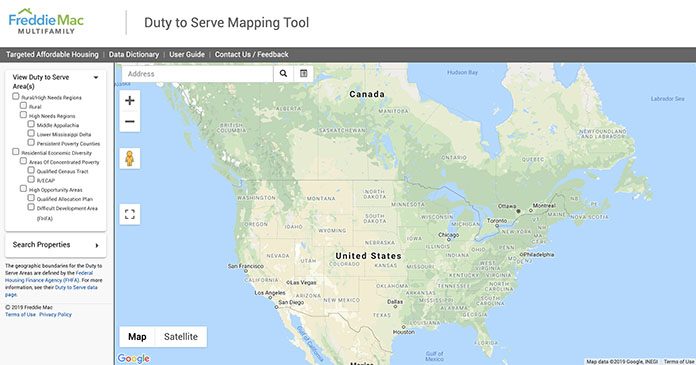Freddie Mac Multifamily unveiled a new mapping tool to help lenders identify investment opportunities in underserved markets throughout the country. The mapping tool, which is part of Freddie Mac’s Duty to Serve Plan, synchronizes data from multiple sources to help investors better understand opportunities for creating and preserving affordable housing in hard-to-serve markets.
“Our new Duty to Serve Mapping Tool will help lenders and investors better understand and support underserved markets,” said Corey Aber, director of Multifamily Community Mission and Impact Finance at Freddie Mac. “Users of the tool are able to easily determine if properties have major public subsidies or Duty to Serve designations, and it overlays tract-level income and demographic data. It’s all part of our effort to simplify the process for making loans that support housing in communities that desperately need it.”
Some of the key features of the mapping tool include the ability to:
- Identify rural, high needs and/or residential economic diversity census tracts
- Identify if a property can receive Duty to Serve credit, supporting efforts to serve historically underserved markets
- Identify properties around the country with major public subsidies from the National Housing Preservation Database
- View income and demographic statistics on each tract level
- Download a spreadsheet of data for a list of addresses or subsidized properties at once for use in other applications
Freddie Mac Multifamily is the nation’s multifamily housing finance leader. Historically, more than 90% of the eligible rental units we fund are affordable to families with low-to-moderate incomes earning up to 120% of area median income.
About Freddie Mac
Freddie Mac makes home possible for millions of families and individuals by providing mortgage capital to lenders. Since our creation by Congress in 1970, we’ve made housing more accessible and affordable for homebuyers and renters in communities nationwide. We are building a better housing finance system for homebuyers, renters, lenders and taxpayers.












